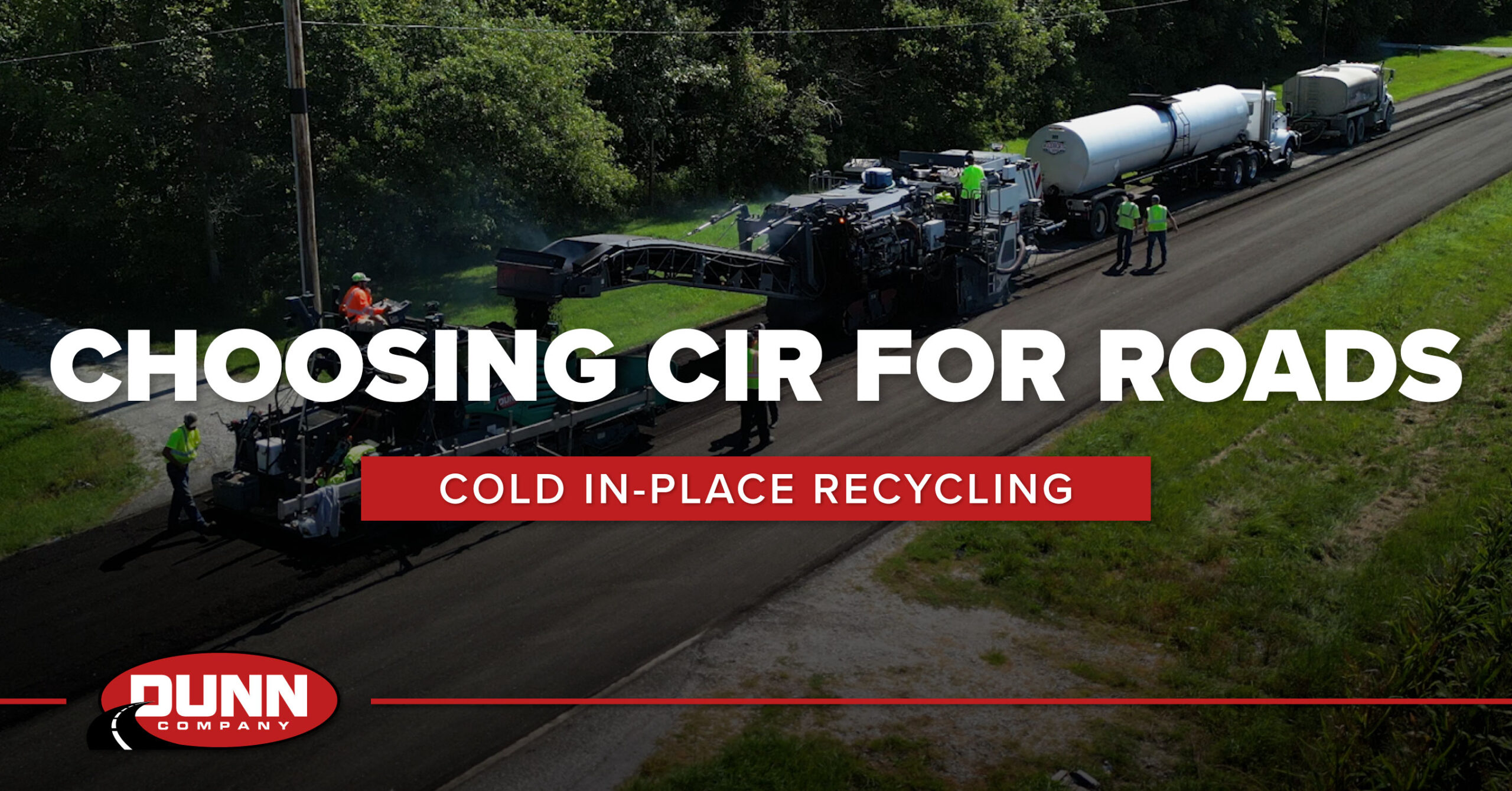Month: June 2025

When Is Cold In-Place Recycling the Right Choice for Your Roads
Cold In-Place Recycling (CIR) is gaining traction across the Midwest as more agencies and contractors look for pavement preservation methods that extend road life, reduce costs, and support sustainable infrastructure goals. But while CIR offers several advantages, it isn’t the right solution for every road. We will walk through what CIR is, where it works best, and how to evaluate whether it fits your next project.

Understanding CIR: A Smarter Way to Rebuild Roads
CIR is an in-place pavement rehabilitation technique that recycles and repurposes the existing asphalt surface. Rather than hauling away old pavement and bringing in new materials, CIR uses a train of equipment to mill the surface, typically 2 to 5 inches, blend it with a stabilizing agent, and is recompacted on-site to form a new, stabilized base layer.
The result? A strong, uniform layer that’s ready for a new surface treatment. Whether that’s hot-mix asphalt, chip seal, or another wearing course. CIR can extend the life of a road by 10 to 20 years, all while using fewer resources and creating less disruption to traffic.

Why Agencies Are Turning to Cold In-Place Recycling
Cold In-Place Recycling offers a mix of economic, environmental, and operational benefits that make it especially attractive to public agencies and engineers:
- Cost Efficiency: CIR can save up to 50% compared to traditional mill-and-overlay or full-depth reconstruction. Fewer materials, fewer haul trucks, and shorter project timelines all contribute to savings.
- Sustainability: CIR reuses up to 100% of the existing asphalt material. That reduces the need for new aggregate and asphalt binder, lowers emissions, and minimizes material waste.
- Quicker Turnaround: Roads can often remain open to local traffic during construction, and final surfacing can follow in just a few days after curing, reducing delays for residents and businesses in the area.
- Improved Performance: CIR creates a stable, consistent base, eliminating deep cracks, ruts, and fatigue issues while also reducing reflective cracking through the new surface layer.
Where CIR Fits Best
While CIR is versatile, it’s not a one-size-fits-all solution. It’s most effective on low- to medium-volume roads with surface-level distress and a structurally sound base. In these cases, CIR can correct damages such as:
- Alligator cracking
- Rutting or shoving
- Moisture infiltration
- Raveling or surface oxidation
It’s also a great solution for roads serving renewable energy sites, residential developments, and rural access routes where maintaining pavement condition with minimal disruption is key.
How to know if CIR is Right for Your Project
- What’s the Condition of the Existing Pavement?
CIR works best when the damage is confined to the surface layer and the base remains intact. If there are major structural failures or deep subgrade issues, a full-depth reclamation (FDR) or reconstruction may be more appropriate. - Can the Existing Materials Be Recycled?
A mix design and lab testing are essential. Asphalt content, gradation, and binder performance must be evaluated to ensure the materials will produce a consistent and durable CIR layer. - Is the Climate Favorable?
CIR requires warm, dry conditions to allow the stabilized layer to cure properly before the final surface is placed. The construction window may be shorter in cooler, wetter regions. - What Is the Budget and Timeline?
If cost and schedule are priorities, CIR’s streamlined construction process and lower material demands can deliver significant savings in both areas. - Is the Right Team and Equipment Available?
CIR requires specialized equipment and experienced crews. Working with a contractor like Dunn Company who understands and specializes in the process and coordinates with project engineers and stakeholders is critical to success.
A Collaborative Approach
CIR isn’t a replacement for surface treatments or hot mix paving. It’s a tool and one that works best when integrated into a broader pavement management program. At Dunn Company, we regularly partner with agencies, engineers, and general contractors to deliver CIR as part of a multi-phase solution. Whether that means CIR followed by a chip seal, a thin lift of hot mix, or additional stabilization, we ensure the process fits the needs of the road and the goals of the owner.

Plan Early, Deliver Better Roads
Cold In-Place Recycling isn’t just about saving money, it’s about doing more with less, building longer-lasting roads, and using our resources responsibly. If you’re an engineer, consultant, or contractor involved in road rehabilitation planning, consider CIR early in your design process. With proper planning, CIR can help you stretch your budget, reduce environmental impact, and deliver safer, more reliable infrastructure for the communities you serve.
Ready to Explore Cold In-Place Recycling?
If you’re considering CIR for your next project or want to learn more about how it can support your pavement preservation goals, the team at Dunn Company is ready to help. With decades of experience, specialized equipment, and a proven track record across the Midwest, we’re the trusted partner for reliable, efficient road rehabilitation. Contact us today to see how Cold In-Place Recycling can work for your roads.

